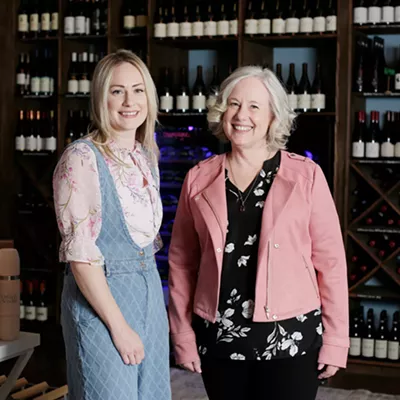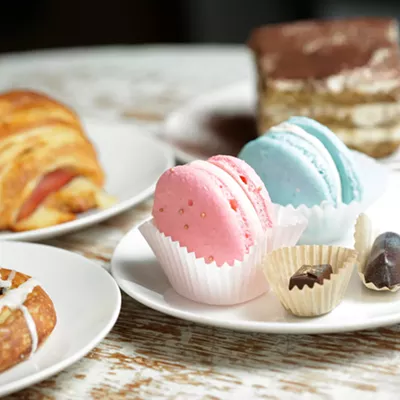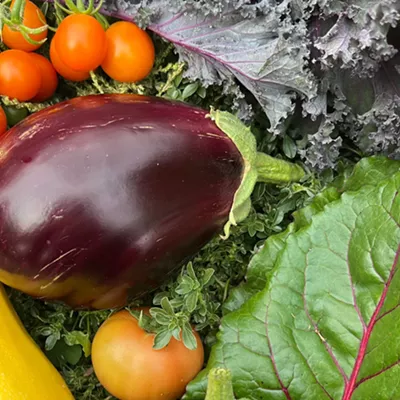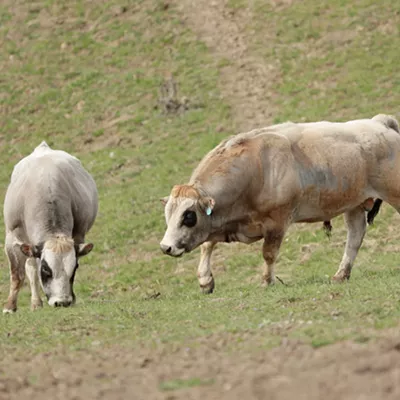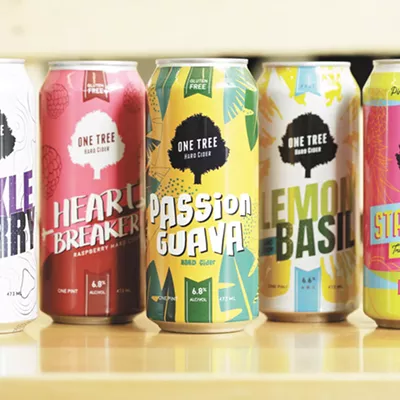Even the cleanliest restaurateurs have been known to wake up in cold sweats during nightmares about unexpected visits from health department inspectors.
Phil and Pat Butterworth, the owners of the Winescape Winery in Southeast Spokane's Glenrose community, once called the Spokane Regional Health District asking for an inspector to perform a health sustainability assessment for them.
"They were shocked," Pat recalls. "They said, 'Who are you people?'"
Although the question was rhetorical, we'll answer it. The Butterfields, who have been married for 45 years, are public health academics; Phil in the area of water microbiology and Pat in the area of environmental health. They're also both Huskies and Cougars, having taught at the University of Washington and Washington State University. Their resumés of accomplishment are lengthy, Phil's including the design of water treatment plants in Vancouver, Portland, Helena and elsewhere in the West, and Pat's including being part of a 2015 White House panel on the health effects of climate change.
When the Butterfields decided to apply their knowledge and passion to winemaking just shy of a decade ago, they did so with a pledge to be good stewards of the environment. Pat says they looked at potential sites in Walla Walla but decided they "were too old to get into that game; it's a pretty mature wine scene there."
Ultimately, they decided on Spokane, in large part because it's a place they like. They avoided the downtown area because, as Pat explains, Phil "is kind of fussy and wanted to do his own building. We looked for a place that was close to downtown but felt like it was out in the sticks."
The "scape" at Winescape spans 14 acres and includes the winery building with a unique drainage system that saves on water use, a 1918 homestead that blends seamlessly into the surroundings, a red barn, and an abundance of open space where deer and other animals can remain wild without being pushed out of their natural habitat.
"They live here, too," Pat says.
Drawing from the Spokane Valley-Rathdrum Prairie Aquifer, Winescape has its water tested twice annually to protect the public and the land. Stormwater issues are taken seriously, too, and runoff from the building and parking lot is treated properly.
Inside the winery, waste is minimized through the use of steam rather than chemicals to clean barrels, lighter-weight glass is used for the wine bottles, wine club members are encouraged to recycle their cardboard case boxes, and corks are given to local artists and crafters rather than being thrown away.
"We do what we can, but we're always looking to do more," Pat says. "Environmental degradation is a theft from future generations. They deserve to have the same lush world that we've had."
Although Winescape doesn't grow its own grapes because of Spokane's "challenging climate," it does try to buy as much of its fruit as possible from growers who participate in Sustainable WA, a statewide program created by a consortium of wine industry stakeholders that promotes low-input wine grape farming to protect natural resources, nurture soil health and foster climate resiliency.
"Right now, Sustainable WA is for vineyards only, and we support that," Pat says. "The stuff we do here is just for us right now, but we're hoping certification will be extended to wineries one day."
When it comes to acquiring grapes, Winescape seeks out growers who are willing to pick the fruit by hand and sell it in small quantities.
Beyond that, Pat acknowledges that she and Phil hadn't developed a complicated business plan when they decided to dive into winemaking.
"I'm not sure we really thought it through," she says. "We decided not to have partners. When you're doing this in your late 50s and early 60s, divestiture gets really ugly later on. We were just two nerds kind of moving one step at a time.
"I think good winemakers have a sense of what a given wine is supposed to be, and then gently allow that to occur," Pat adds. "I think Phil's goal has simply been to make great wine," and to him that means using precision in the cellar to achieve purity in the bottle.
During the Spokane Winery Association's annual Holiday Wine Fest the weekend before Thanksgiving, Winescape offered four of its current releases for the public to sample: its 2023 riesling, 2019 GSM, 2018 merlot and 2018 "Red Mountain" cabernet sauvignon.
The riesling has a mild kerosene aroma that's common for the varietal, giving way to an engaging orange blossom note. In the mouth, the flavors of lemon, citrus and green apple seem tart at first, but leave a lingering impression of sweet fruit.
The GSM — a classic Rhone-style blend of grenache, syrah and mourvedre — offers a wide spectrum of aromas and flavors, including dark plum, assorted dark berries, cinnamon and toasty marshmallow.
Cherry, marionberry and clove notes take center stage in the fruit-forward merlot, which finishes with vanilla and leather impressions.
And the cabernet provides a sweet-fruit and engaging spice exclamation mark to the quartet, a classic melding of Red Mountain grapes, French oak barrel aging and the winemaker's deft touch.
Winescape's wine portfolio is ever evolving as the Butterfields pay attention to the preferences of their wine club members. And while most of its red blends are planned, some are the result of the winery's size.
"We're small," Pat explains. "We make just 2,000 cases a year, so everything has to go somewhere."
That would explain why a healthy dollop (27%) of the Bordeaux variety malbec shows up in the otherwise Rhone-style blend known as Marmot. It also would explain why a splash (7%) of the Rhone-variety grenache is included in the otherwise Bordeaux-style blend called Field Trip.
"We have fun with the blends," Pat says. "We may not always know where we're going with them, but the payoff is when a really good wine is the result."
Not everyone gets a second career, but the Butterfields are thriving in theirs.
"We are old enough to know that we are lucky to have this little piece of land," Pat says. "We're fortunate to be able to pivot our skill sets to take care of it — for the time we have it and for future generations." ♦







